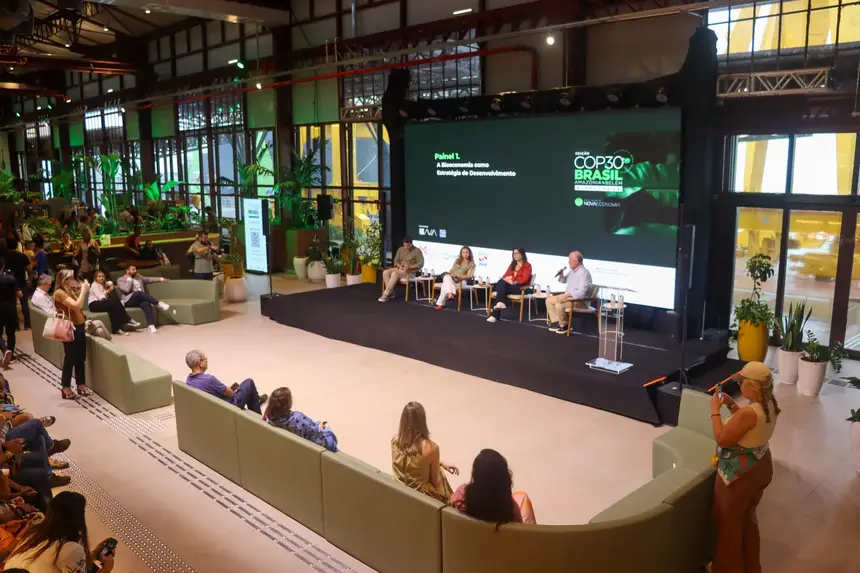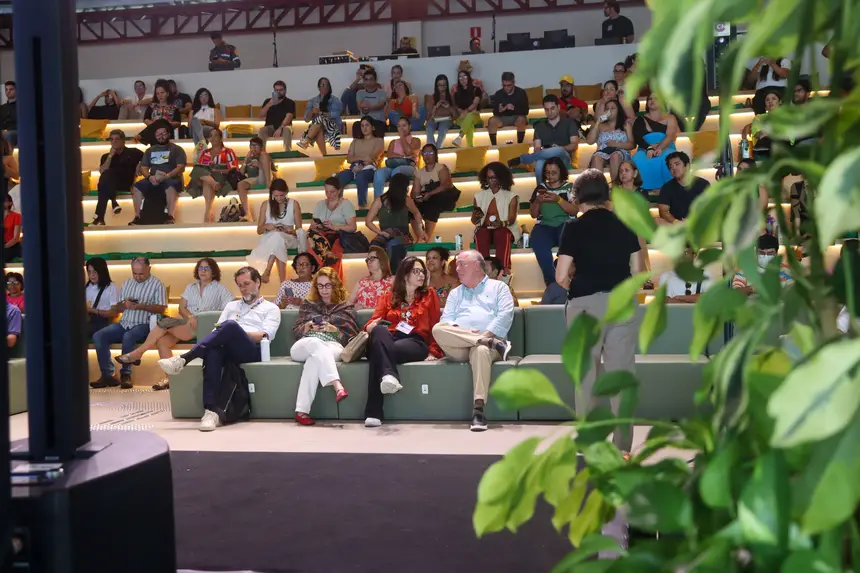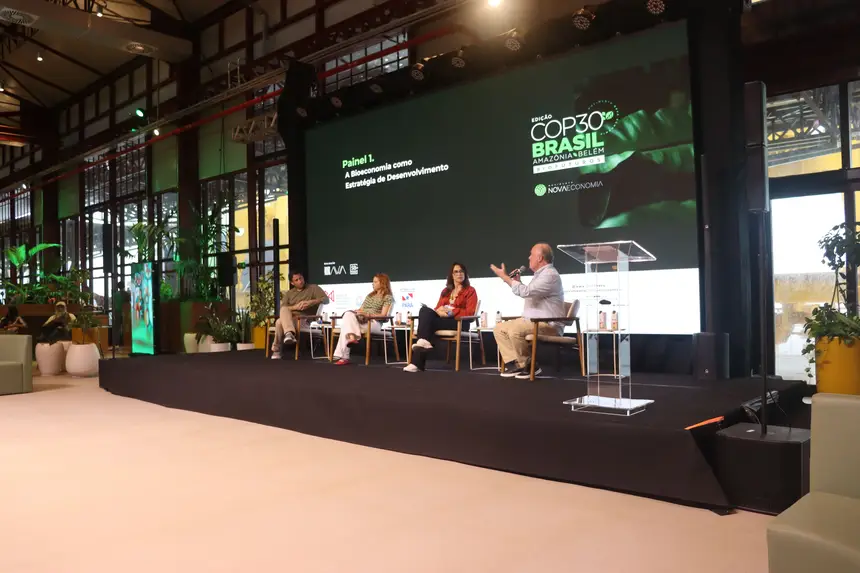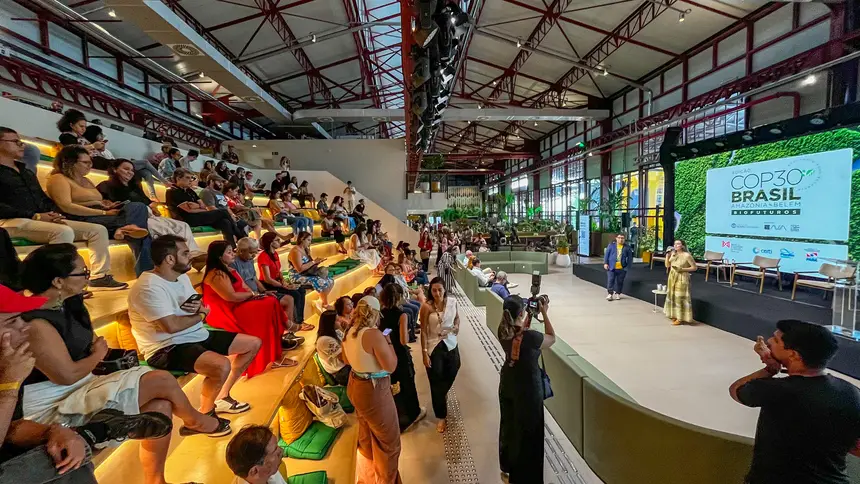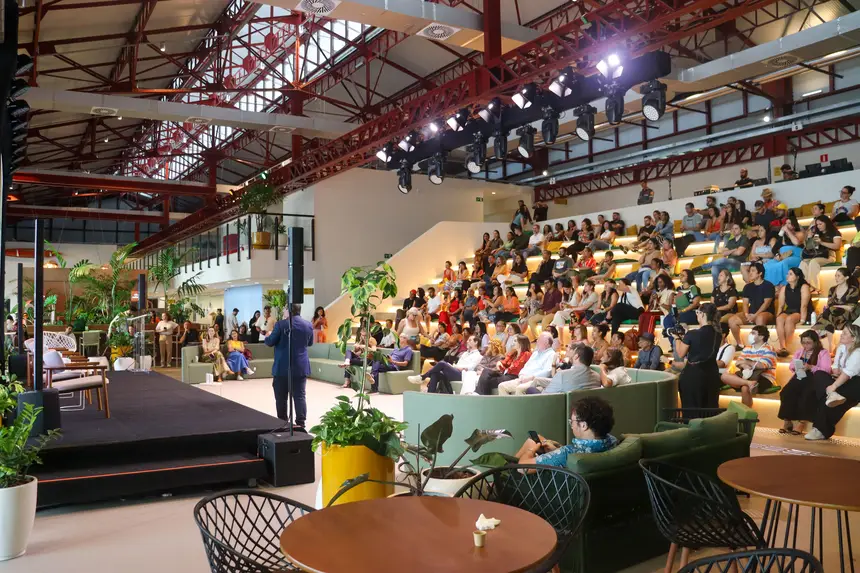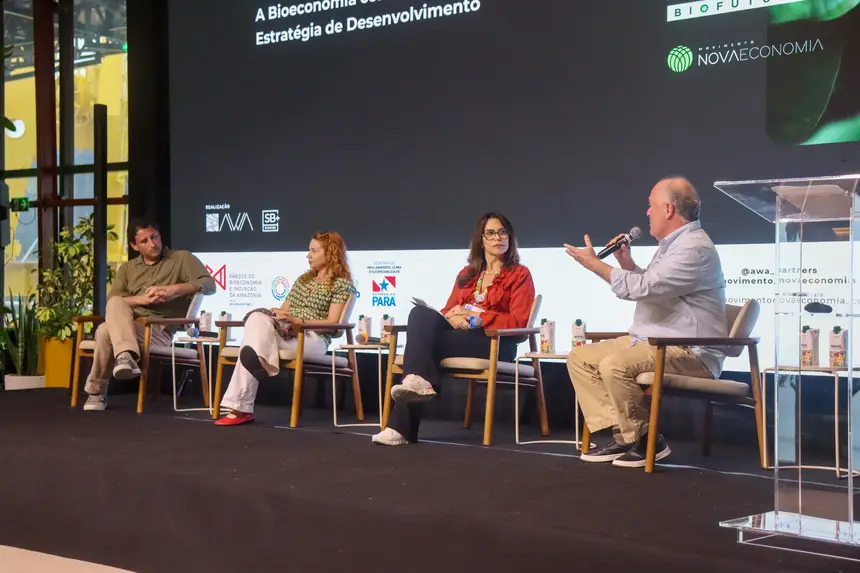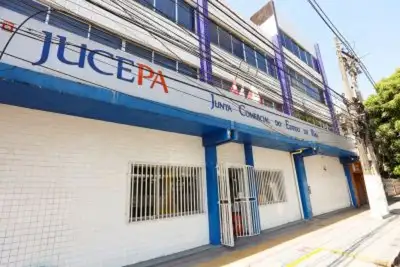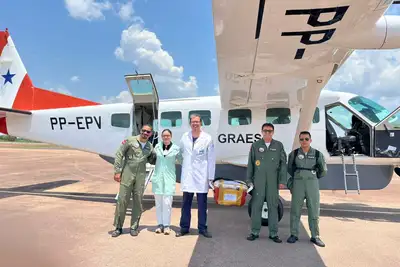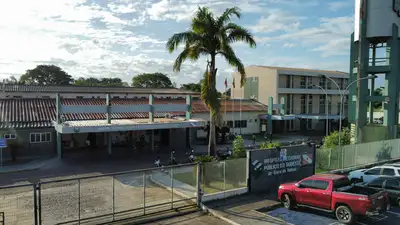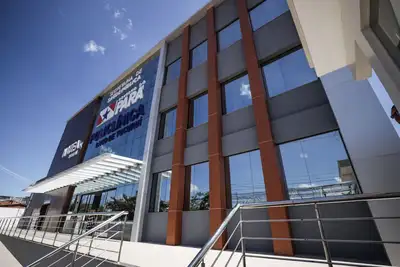Pará reinforces pioneering spirit in launching the New Economy Movement during COP30
Panel highlighted climate goals, urban history, and strategies for economic transformation at the Amazon Bioeconomy and Innovation Park
The Government of Pará, through the Secretary of Environment, Climate and Sustainability (SEMAS), participated yesterday, Monday (17), in the opening of the "New Economy Movement - Amazon Edition COP30: Biofutures", at the Amazon Bioeconomy and Innovation Park in Belém. SEMAS was represented by the Deputy Secretary of Bioeconomy, Camille Bemerguy, who presented the State's trajectory in building bioeconomy policies.
The panel also brought together History professor Michel Pinho and specialists from the innovation ecosystem and the green economy. Paulo Dallari, Director of Reputation and Government at Natura; Patrícia Daros, Executive Director of Fundo Vale; Marcos Da Ré, Director of Green Economy at Fundação CERTI and Amazon Bioeconomy and Innovation Park, in addition to Camille Bemerguy.
Socioeconomic development and combating deforestation
The environmental policy of Pará articulates forest protection and economic opportunities. Expanding and paving the way for Bioeconomy to go through this process of association between progress and preservation.
"You can combat deforestation, but if you do not associate economic and social strategies, you will not achieve fair and sustainable development," said Camille.
State Bioeconomy Plan as an unprecedented policy of social participation
Camille presented the collaborative process that structured the State Bioeconomy Plan (PlanBio). "We build a plan with various sectors of society — academia, government, third sector, private sector — and indigenous peoples, quilombolas, extractivists, who for the first time managed to be part of a construction from scratch. At the time there were 92 actions; today we already have 122 for these segments," she explained.
The construction of a new logic of development for Pará, through the valorization of the peoples of the Amazon and the living forest, has already promoted more than 2,300 benefited businesses, with a direct impact on more than 404 thousand people and has already allowed investments of around 600 million reais. PlanBio also developed Inova Sociobio, which focuses on strengthening community businesses, especially women and youth in indigenous, quilombola, extractivist, and family farming communities.
The Park was born as the largest hub of this segment in Latin America, and the only technological park on the planet that uses the potential of the forest to serve traditional communities and startups in the area. Being the most important project of this Bioeconomy machine in Pará. Ready to develop and promote an innovative and scalable environment.
"I see the Park as an element that synthesizes this journey, this place we want to reach. A space that coexists with the different, where community businesses, startups, and industries can talk, learn from each other, and advance in building a new model with prosperity, nature, climate, and a central focus on people," said Camille.
Bioeconomy as a strategic axis of the new economy in Pará
When addressing the economic paradigm shift in the State, Camille emphasized that bioeconomy has become the basis for a broader transition. "A plan that becomes an essential part of this macro strategy of the State, to make a transition, to make an economic transformation, seeking to establish the foundations for a new economic model. An economic model for which we still did not have all the answers. But today it is on a stable and prosperous path," she concluded.
Connection between urban history and the future of the Amazon
The panel also featured History professor Michel Pinho, who presented an in-depth reflection on the urban formation of Belém, its socio-environmental dynamics, and the historical challenges of water and territorial management. He highlighted how past decisions influence current urbanization processes and climate vulnerabilities.
Among the points raised, the professor cited urban proposals from the 18th and 19th centuries that sought to address flooding and organize the natural flows of the city.
"Studying the urban history of Belém, we realize that there was already the idea of building canals to drain rainwater areas, transforming urban space and preventing flooding. But these interventions were not carried out, and the city grew without this planning. This explains many of the problems we face today," he explained.
The historian also highlighted records about the regional economy at the same time. "When we observe the economic movement of the second half of the 19th century, we see products like nuts, oranges, and other forest species driving transformations in the territory and urban daily life. This shows how sociobiodiversity has always been an essential part of the Amazonian economy," he stated.
The panel also brought together organizations from the innovation ecosystem and specialists linked to sustainable development, strengthening the role of the Bioeconomy Park as a convergence space between science, market, communities, and government. This articulation reinforces the central objective of the New Economy Movement: to consolidate pathways for a transition that values the forest, sociocultural diversity, and the creativity of the Amazon.
Text by Lucas Maciel / Ascom Semas


